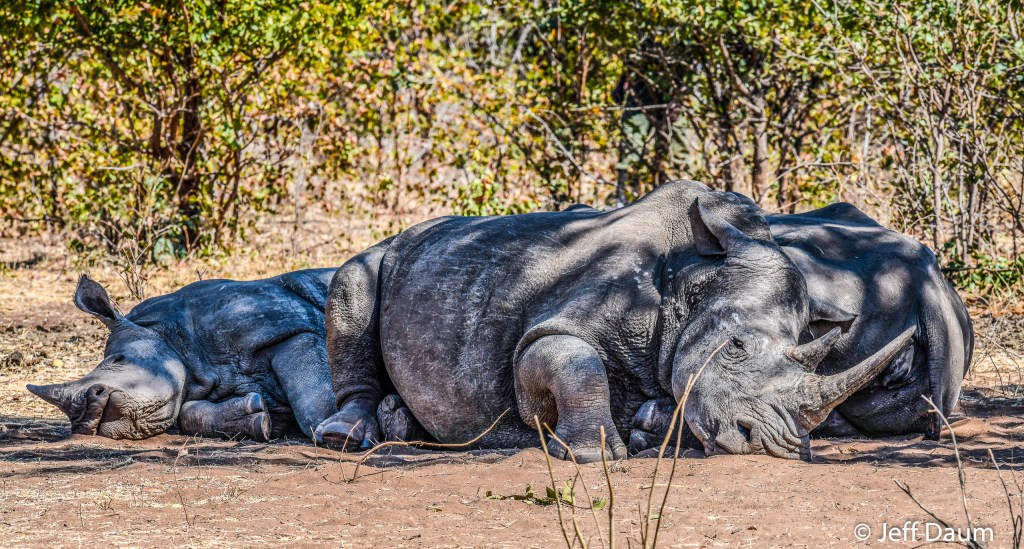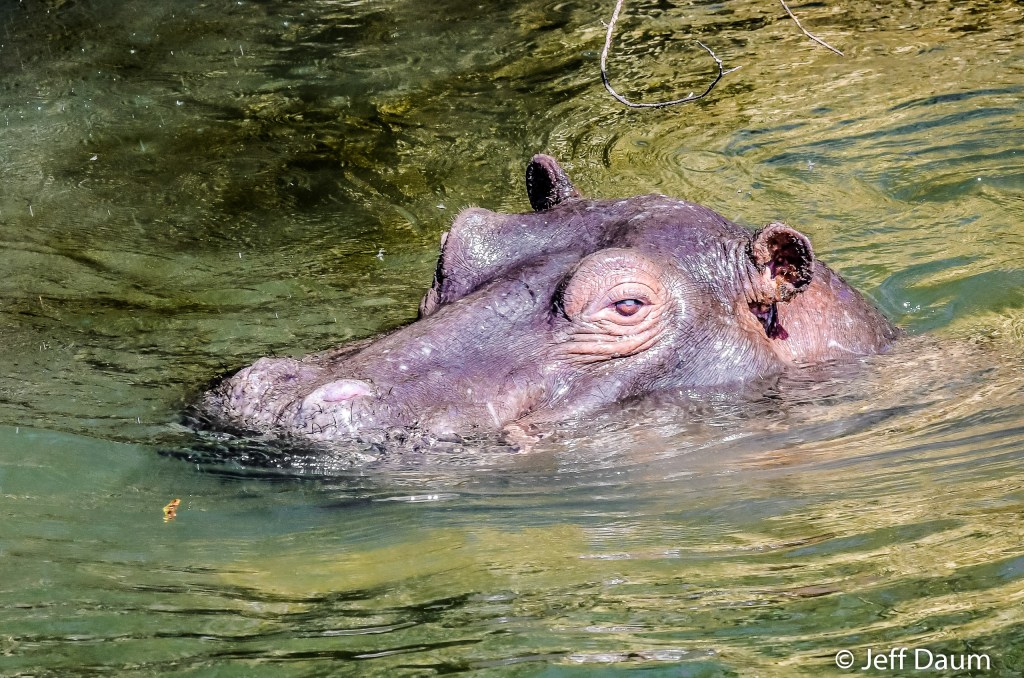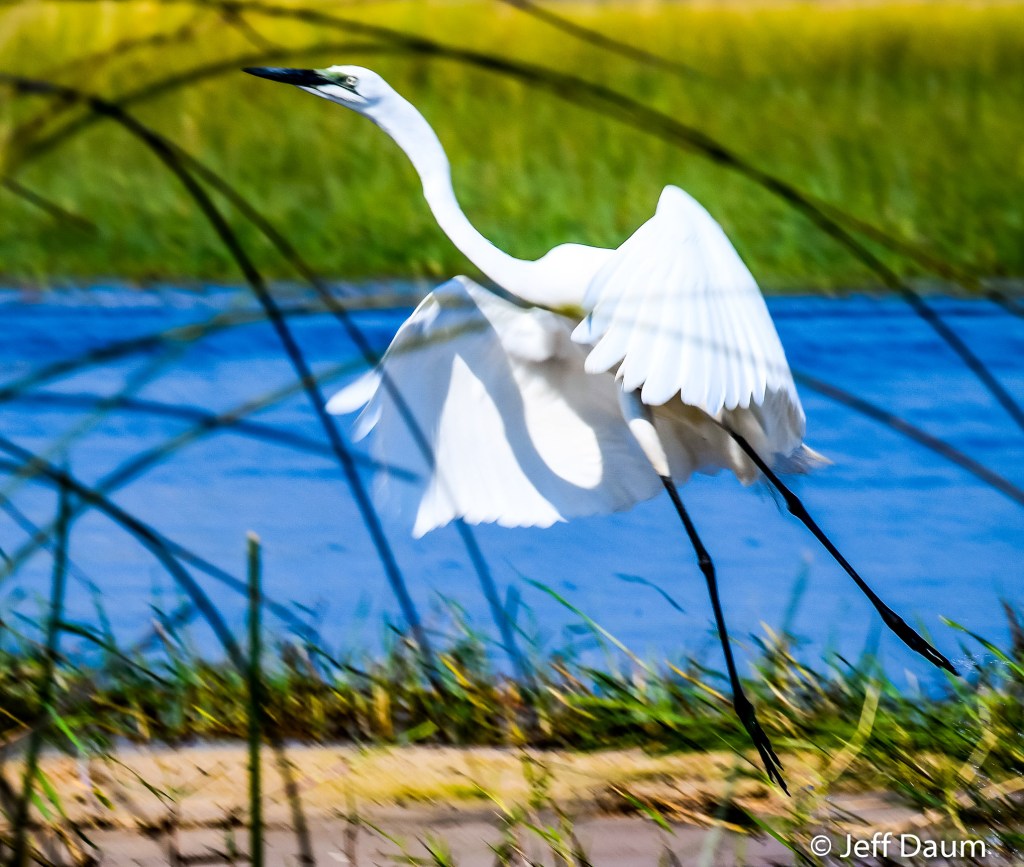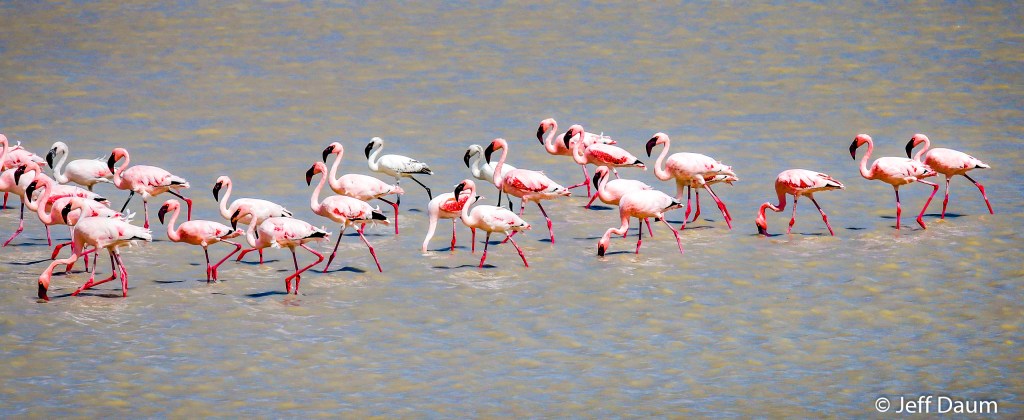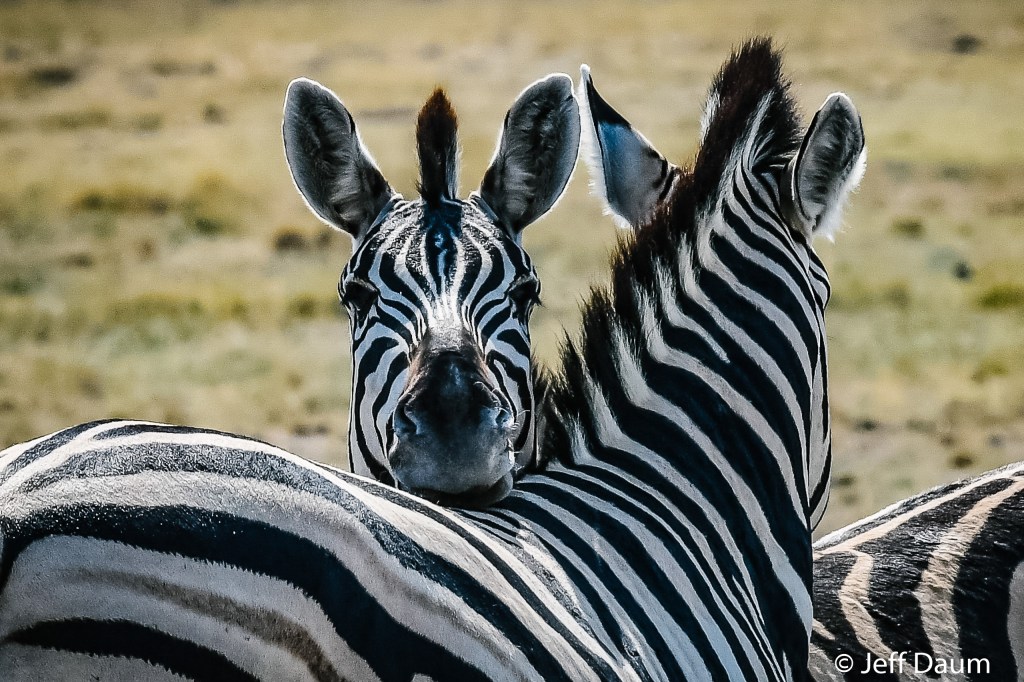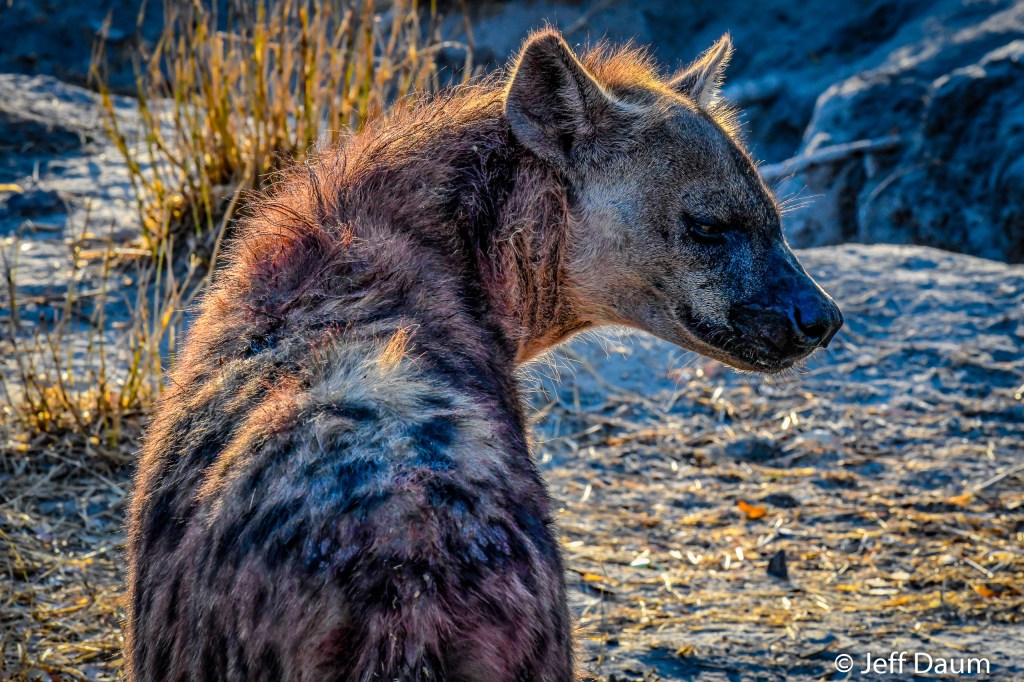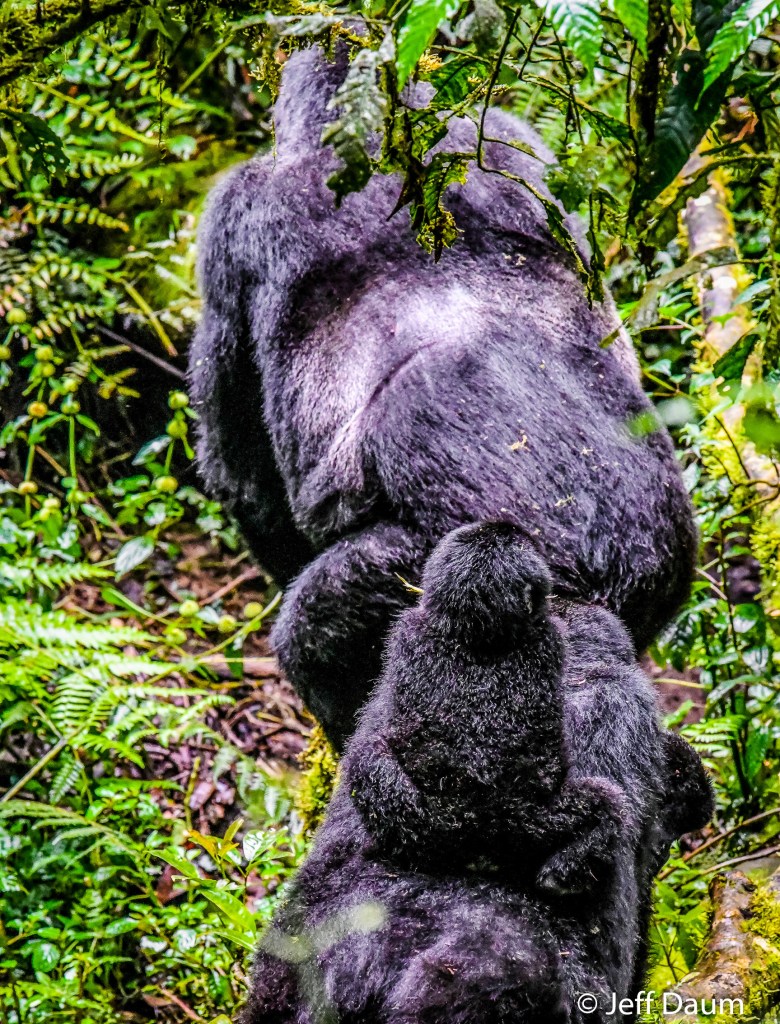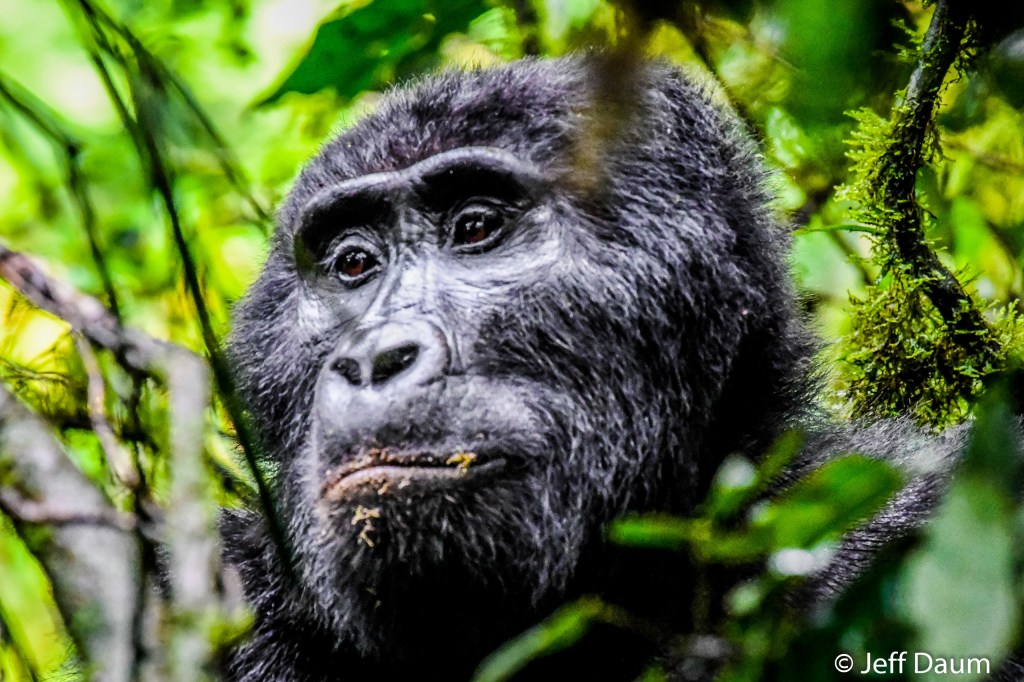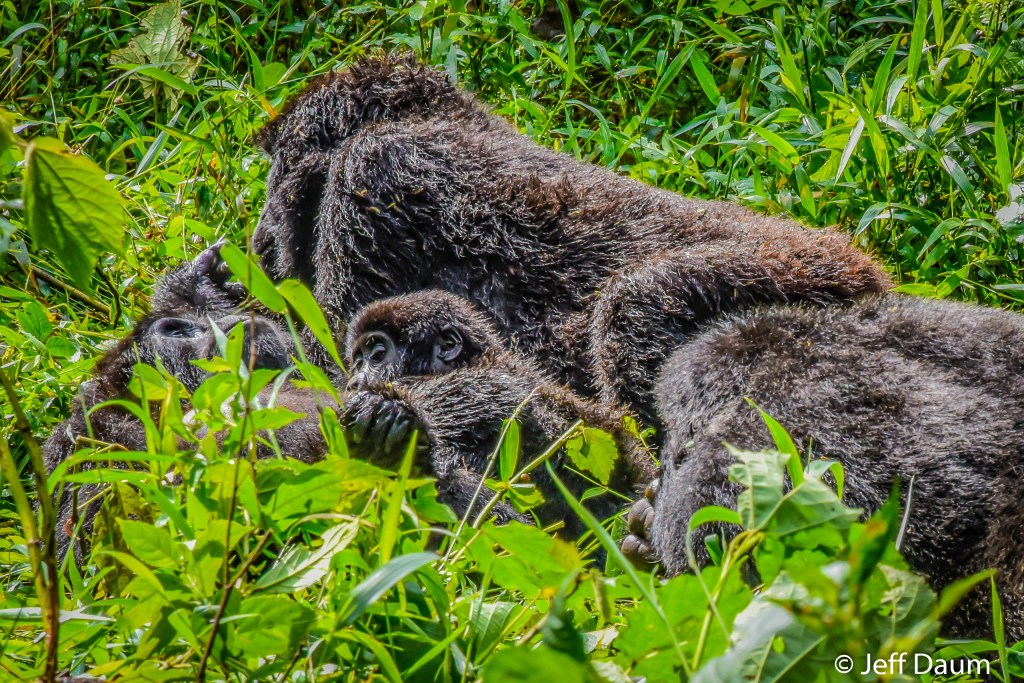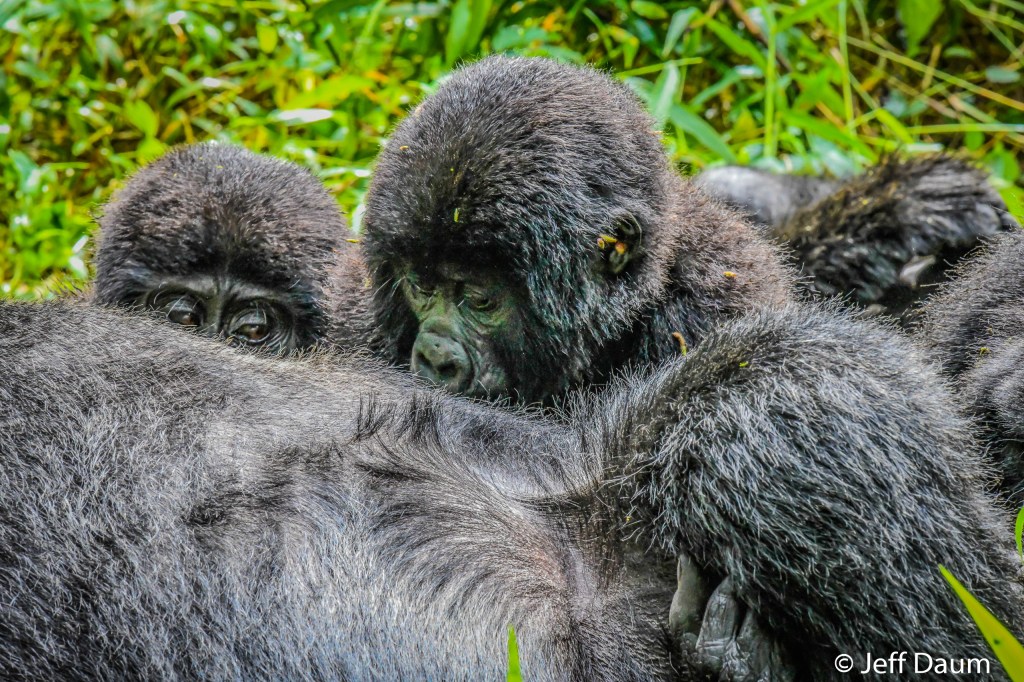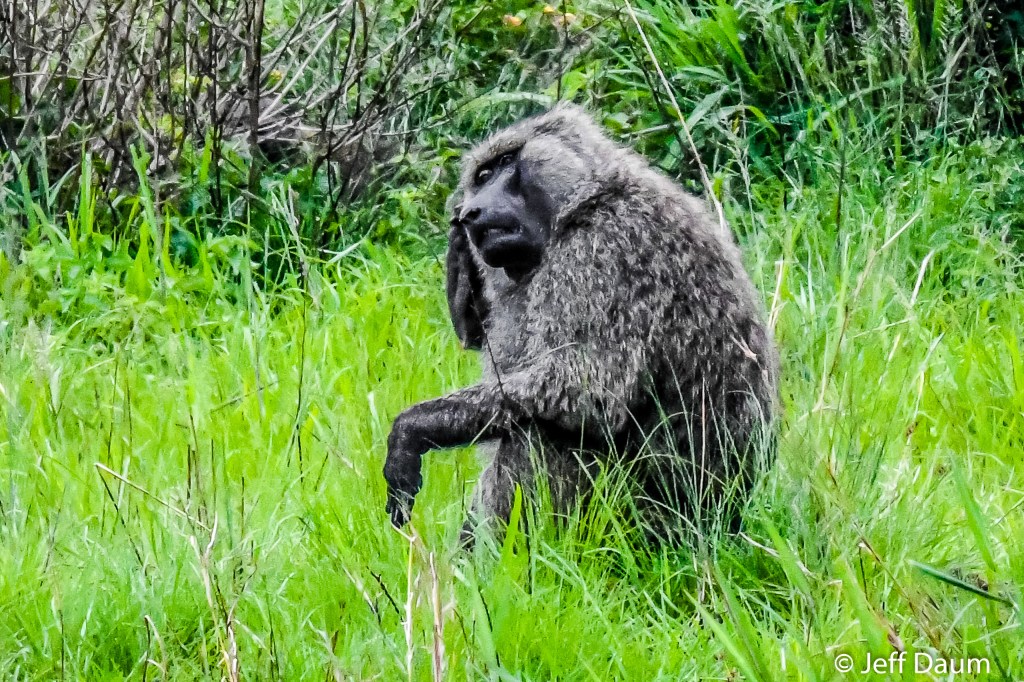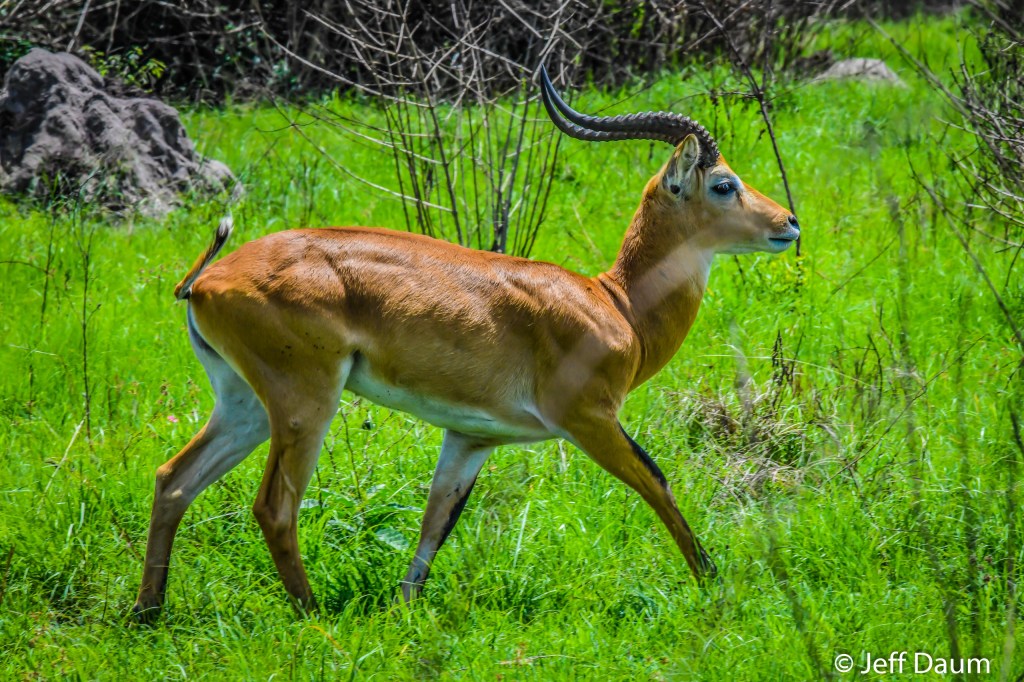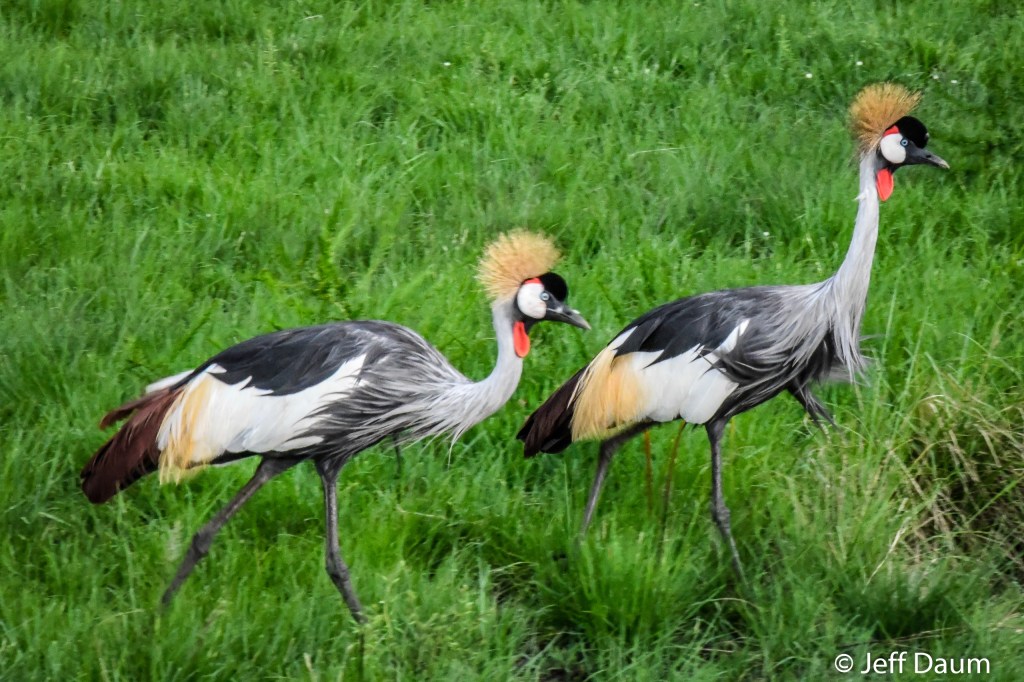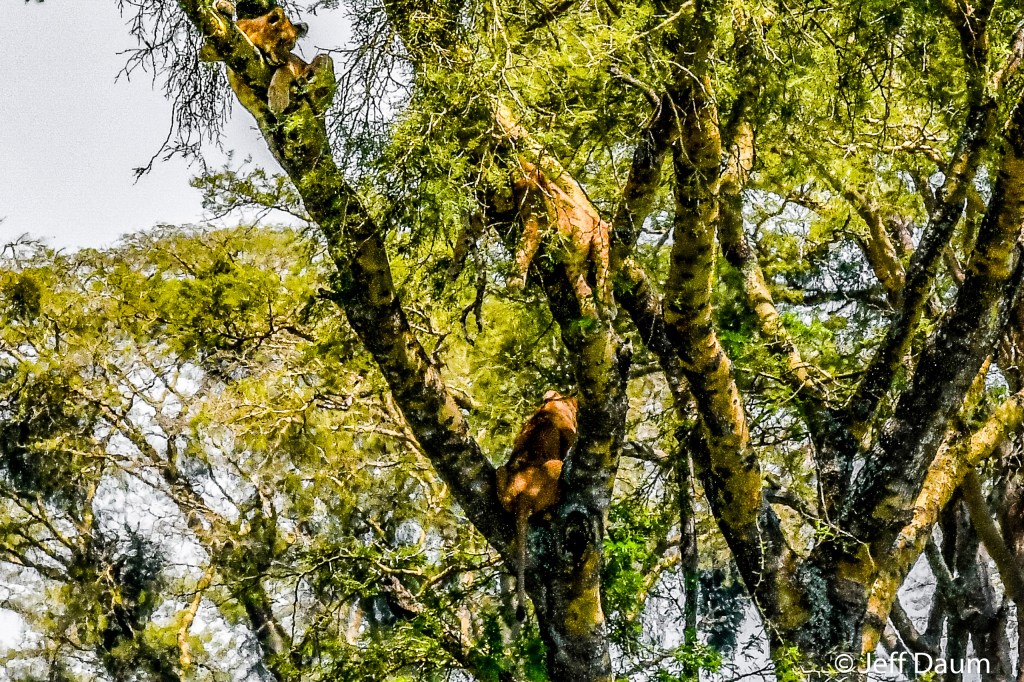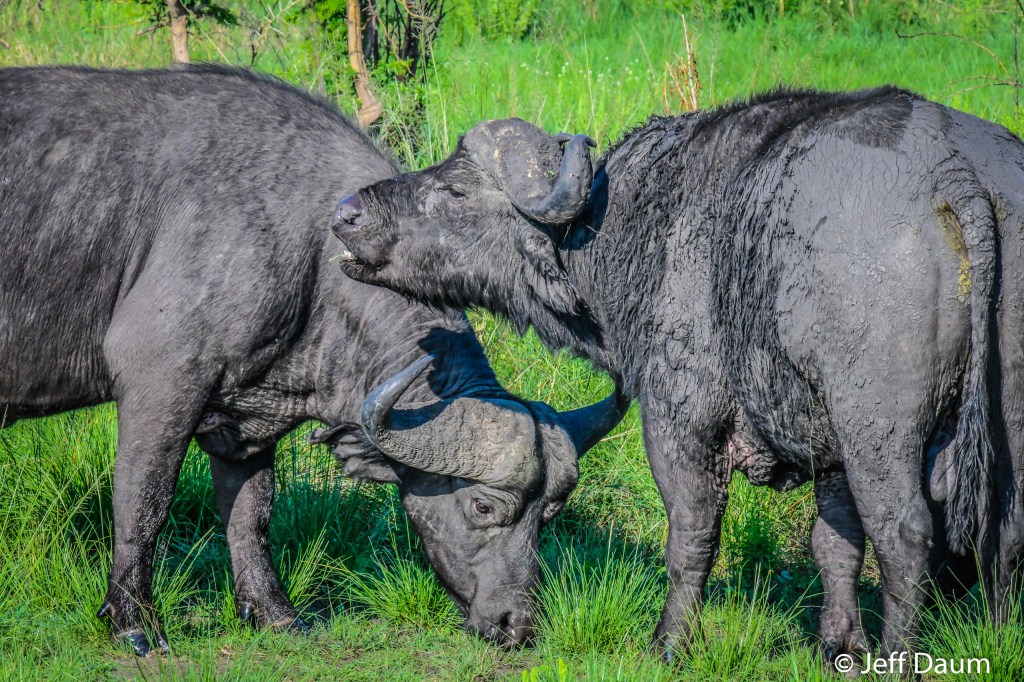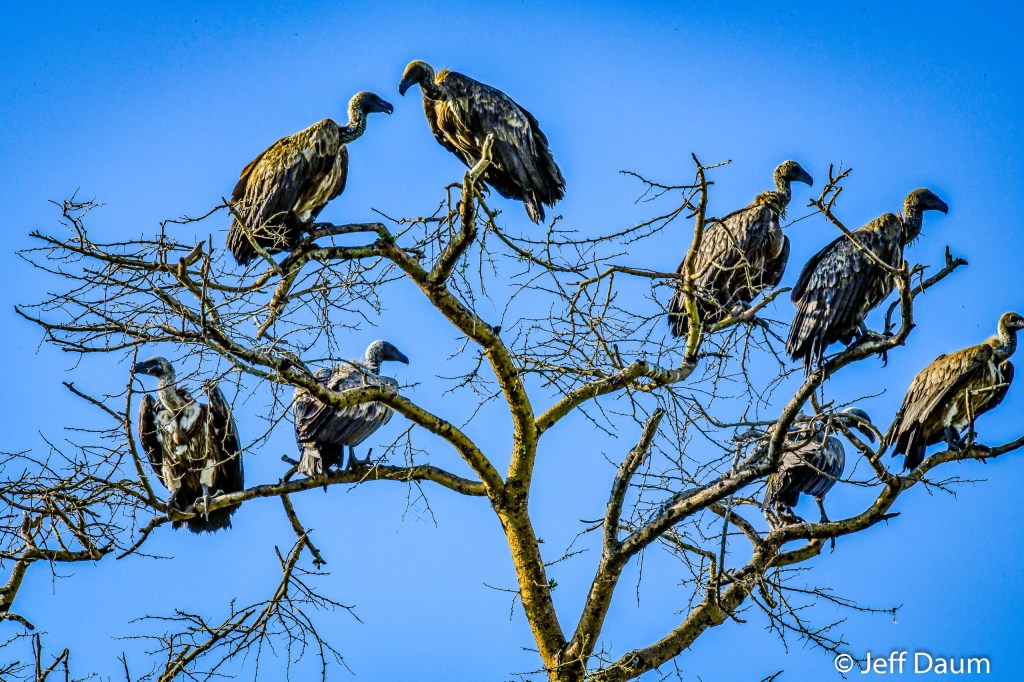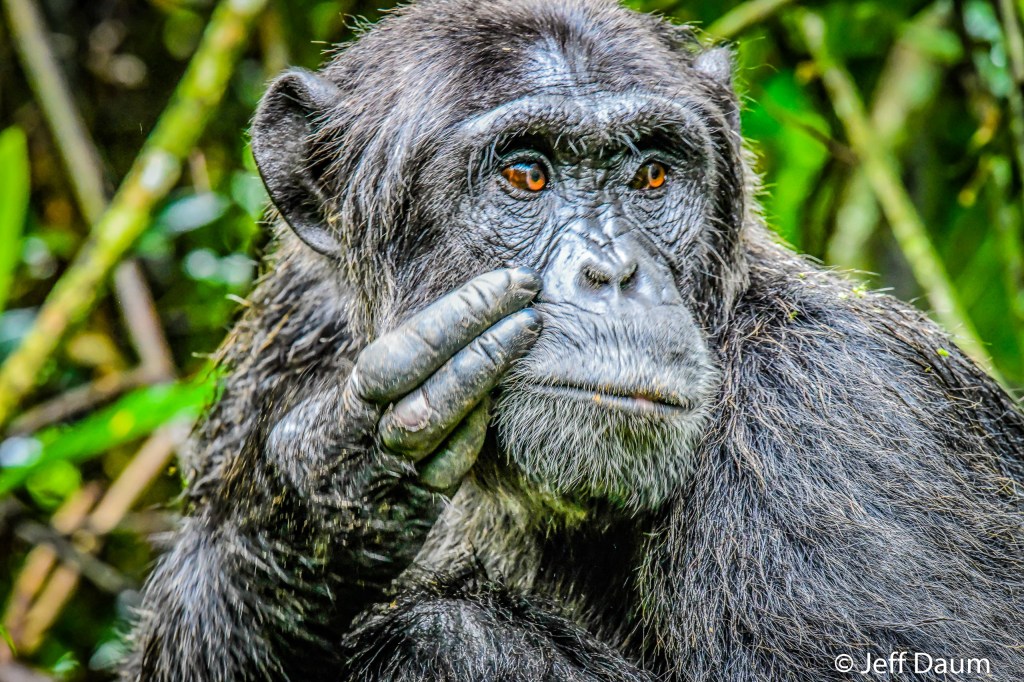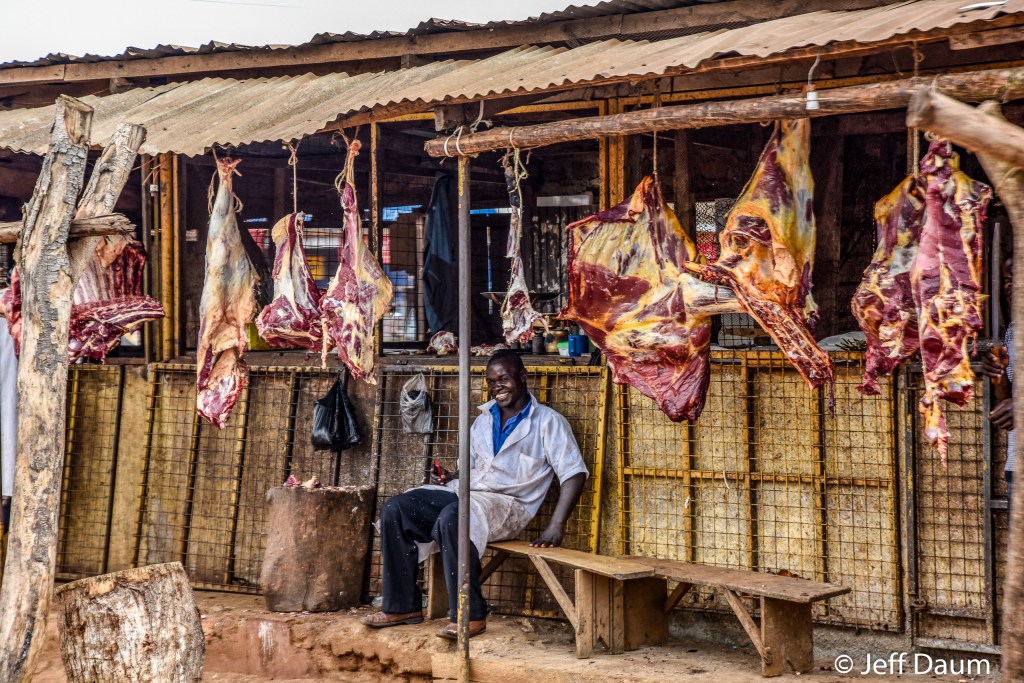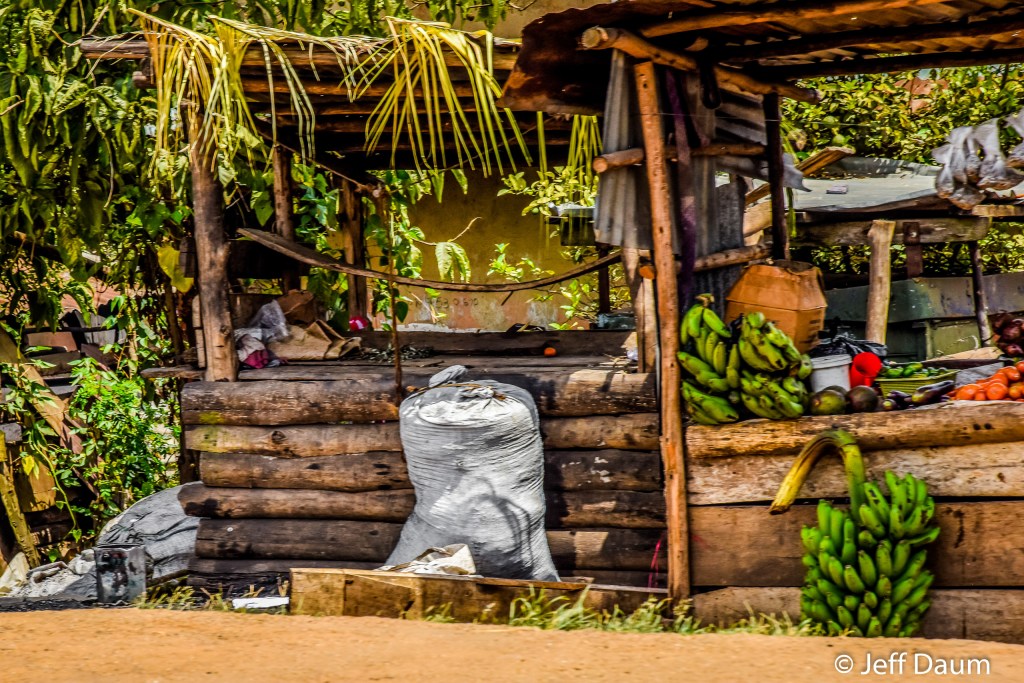Join me as we explore our ‘close’ relatives the gorillas, with 98 percent, and chimpanzees who share approximately 99 percent of our DNA.[1]
Part of our motivation to travel, is to see flora, fauna and experience civilizations that are different from our own, and unfortunately, might not be around in the future for a variety of reasons. Hence the impetus for doing another safari. Having done several African safaris in the past (Kenya, Tanzania, South Africa), this was one that would provide an opportunity to see the endangered Mountain Gorillas.
We typically do back to back trips to maximize what we can explore while in a distant part of the world. This trip was no different- we spent the first couple of weeks on a Tauck small group tour of Botswana, South Africa and Zambia. We traveled with our friends, whom we originally met on another African trip years before.
The wildlife, plants and culture we experienced in Botswana, South Africa and Zambia covered the full emotional spectrum from amazing beauty, to brute raw power, to abject poverty. Here is a mini-sample:
However, that part of our trip is for another story.

The second part of the trip and the focus here, took place in Uganda. It was a private tour we arranged with our friends, through Abercrombie & Kent.
The planning for the trip took place about a year and half in advance, to ensure that we could get the required permit to see the gorillas when we wanted to visit (September). Uganda Wildlife Authority (UWA), the government body responsible for tourism in Uganda, limits the number of permits issued per day. A separate permit is needed for the chimpanzee trek. For each of us, the Gorilla permit cost US$1350, for two days access. It is also nonrefundable (unless you are sick or show up sick, in which case they will not let you go on the trek). Importantly, the cost of the permit contributes to the preservation of the Gorillas.
As the saying goes, getting there is half the fun (or, was the saying that it will be twice as convoluted as a straight line from point A to point B?).

We started in Entebbe and drove for about an hour to our hotel Lake Victoria Serena Resort & Spa, to overnight, before we continued to Bwindi. To get there, we flew from Entebbe to Bwindi on a 75-minute flight, followed by an hour and one-half drive to the Bwindi Impenetrable Forest National Park and our camp, Sanctuary Gorilla Forest Camp, within the National Park. Our “tent” was a canvas covered free standing unit that included an en suite bathroom and very comfortable bed. Not exactly roughing it, but I digress… Meals and libations were provided in a central lodge.
Bwindi Impenetrable Forest National Park is a UNESCO World Heritage Site, home to about 600 mountain gorillas (about half the last surviving population). Also, it has 360 species of birds, 200 species of butterfly and 324 different tree species within its rainforest.[2]
We spent the first day exploring the area and nearby community. We were very impressed by Ride 4 A Woman www.ride4awoman.org that provides support, skill training, a safe haven, and access to micro loans to start small businesses for women.

Similarly, we visited Bwindi Community Hospital www.bwindihospital.com founded in 2003 by US missionaries. It was moving to see the heartfelt support the hospital has for the surrounding community and the pygmy population, teaching hygiene and providing basic health services. This has resulted in significant improvements in childbirth and wellness.
Soon we were preparing for our first trek to see the Silverback (a.k.a. Mountain) gorillas, and find out if the exercising we had been doing (for example, I wore my hiking boots on my elliptical trainer for several months prior) had been sufficient. Clothing-wise this meant comfortable hiking boots (ones with soles that can provide necessary traction on the slippery rainforest floor), long pants, gaiters, and long sleeve shirt, rain jacket, gloves (you grab the nearest tree or bush, which typically has thorns, to prevent falling), hat, and backpack with a day’s supply of water and food, toilet paper, and DEET insect repellent.
You start at the guides’ meeting place, where you are assigned your local guide, can hire a porter (very helpful), and the Gorilla family (there are about 11) you will be seeking out. Our family was the Rushegura Gorilla family group. Before our arrival, the guides have been up in the forest tracking each of the respective families, to get a reasonable idea where they might be that day. They also go over what to can expect, how to ‘behave,’ etc. Then you head out for what could be as little as a couple of hour trek to upwards of four hours (one way), to find your Gorilla family.
Your guide does not follow any real trails. He uses a machete to clear some of the dense brush and you do your best to follow him. When you head out, you are going up the mountain and it may vary between sun, dense shade, rain, mud, slimy logs or branches, and for good measure, a creek or two. A sturdy walking stick is essential to help maintain your footing. The guide is also very helpful to get you through the more difficult passages. Almost certainly you will slip and fall at least a couple of times. I kept the lens caps on my lenses until we stopped for a break, or had spotted something worth capturing.

Speaking of which, my equipment included a Nikon D810 camera body with a Nikkor 24-120 zoom f/4G ED VR AF-S lens, and a Nikon D850 camera body with a Nikkor 300 mm f/4E PF ED AF-S lens, both attached to a BlackRapid Breathe Double Camera Harness with safety straps. I chose this two-camera set up because I did not want to be changing any lens in the rainforest, and the BlackRapid harness permitted me to have both of my hands free when I was not shooting a picture. The harness also keeps the weight of the cameras and lenses off your neck and spread comfortably across your shoulders.
Words fail to describe the awe, excitement, and relief you feel all at once when you finally come upon the Silverbacks. The first day was about a three-hour trek (one way), while the second day was only about an hour and one-half, when we came upon the Rushegura family.
We were fortunate to find them, including the dominant Silverback male, a mother, and siblings going about their life pretty much ignoring our presence. I attribute this incredible opportunity to observe the natural routine of the Mountain Gorillas, to the excellent job of the UWA and guides, ensuring that only a limited number of very small groups of individuals are allowed to trek into the Bwindi Impenetrable Forest at any one time. We did not see any other groups once we started up the mountain each day.
We watched, the gorilla family forage for leaves, tubulars and berries or fruit (gorillas are herbivorous). The younger gorillas appeared to be playing on the vines, running and tumbling with one another. The father typically kept his distance, but a watchful eye on the group. Their actions and movements for the most part were gentle, belying their size and powerful upper body.
However, few times while we were watching them, a dominant male would run up and challenge us. We had been forewarned by our guide, but it was still initially very scary. They are very fast and literally run up to within a few feet of you, screaming, and then stop, standing, facing you. We were told to appear nonthreatening (do not raise an arm, motion, etc.), and remain still. After a few seemingly very long moments, the gorilla would then simply turn and go back to the group.
Each day, once we found the family, we observed for about an hour.
We then left the Bwindi Impenetrable Forest for Queen Elizabeth National Park, approximately three-hours drive, over crude roads. We stayed at Ishasha Wilderness Camp. The Queen Elizabeth Park had a mind-boggling cross section of wild life. We got to observe tree climbing lions, elephant herds, hippos, and more.
Next, we left there for Kibale National Park, about a four hour plus drive. We stayed at the Kyaninga Lodge. This was the base location for our chimpanzee trek.
IMAGES Group E
The chimpanzees are smaller than the Mountain Gorillas. They were, in a word, far more frenetic than the gorillas. The interactions were often more chaotic between chimpanzees, turning from sparing to a quick fight. Unlike gorillas, chimpanzees are omnivorous[3], though we only observed them eating vegetation. The groups were often larger in number than the Mountain Gorilla family we observed.
All too soon our expedition was over. We returned by land cruiser to Entebbe, a five or so hour drive, to fly back home. Bodies a little sore, but phenomenal memories and even a picture or two…
[1] Scientific American Tiny Genetic Differences between Humans and Other Primates Pervade the Genome, Kate Wong, September 1, 2014
[2] Data provided by Abercrombie & Kent
[3] Difference Between Gorilla and Chimpanzee,differencesbetween.com, July 27, 2011 Naveen


